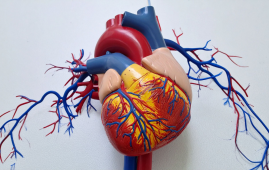

A new study published in Science Advances looked into one of the many elements of cancer that are still poorly understood: therapy-induced senescence in tumor cells. The research, conducted by researchers from Politecnico di Milano, Johns Hopkins University in Baltimore, the National Cancer Institute in Milan, and the National Research Council, broadens our understanding of cancer biology and sets the door for future therapeutic advances.
Cancer is still a global health threat, claiming millions of lives each year. Chemotherapy and radiation therapy, for example, remain the major procedures for treating neoplasms. However, a tiny fraction of treated tumor cells, known as “therapy-induced senescent” (TIS) cells, develop resistance to standard therapies, resulting in tumor quiescence and, eventually, recurrence.
The researchers aimed to understand the biological factors behind TIS cell development. Researchers used advanced optical microscopy techniques to identify biomolecules based on their characteristic vibrations, combining three-dimensional holograms of tumor cells with ultra-short pulses of laser light with a duration of just one millionth of one millionth of a second.
These cutting-edge technologies enabled them to investigate both the chemical and morphological characteristics of TIS cells in human malignancies. Importantly, this investigation was carried out without the use of invasive procedures, preserving the cells’ original state.
The results are quite encouraging. The researchers were able to identify crucial
TIS cell properties in human tumor cells, offering light on their early expression. These features include mitochondrial network rearrangement, lipid overproduction, cell flattening, and expansion. Researchers established a definite timetable for the emergence of these different symptoms by studying a large number of cells.
Arianna Bresci, the first author of the study and a doctoral student in the Department of Physics at Politecnico di Milano, commented, “This result is a clear example of how cutting-edge technologies, multidisciplinary expertise, and strong international collaborations are crucial in addressing the most pressing biological questions, such as the early reaction mechanisms of tumor cells to anticancer therapies.”
Dario Polli, associate professor at the Department of Physics at Politecnico di Milano and the coordinator of the study, emphasized, “Our findings provide important insights into the complex world of TIS in human tumor cells. In our laboratory at Politecnico di Milano, we have developed a new non-invasive laser microscope that has allowed us to understand the initial stages of this phenomenon.”
The finding opens up new routes of investigation for cancer research in the future. The research team sees larger applications in the creation of tailored treatments employing patient-derived tumor samples, as well as the potential to improve current oncological screening techniques. This study team’s findings bring us closer to understanding the complexity of cancer and provide hope for more successful medicines in the future.
more recommended stories
 Genetic Diversity Explains Obesity Risk Differences
Genetic Diversity Explains Obesity Risk DifferencesCross-ancestry Study Identifies Novel Obesity Genes.
 Meniscal Tear and OA Pain Improved by Home Exercise
Meniscal Tear and OA Pain Improved by Home ExerciseHome Exercise Proves Effective for Knee.
 AI ECG Model Outperforms Standard STEMI Triage
AI ECG Model Outperforms Standard STEMI TriageNovel AI ECG Model Outperforms Standard.
 New Software Transforms Real-Time Pathogen Surveillance
New Software Transforms Real-Time Pathogen SurveillanceReal-Time Pathogen Surveillance Software Transforms Environmental.
 Bright Nights May Increase Stroke, Heart Failures in Adults
Bright Nights May Increase Stroke, Heart Failures in AdultsBright Nights are tied to increased.
 Cannabis Use Linked to Regular Tobacco in US Youth
Cannabis Use Linked to Regular Tobacco in US YouthCannabis Use and Tobacco Risk: A.
 Mediterranean Diet Reduces Endometriosis Risk in Women
Mediterranean Diet Reduces Endometriosis Risk in WomenMediterranean Diet and Endometriosis: A Promising.
 Night Shifts May Trigger Irritable Bowel Syndrome (IBS)
Night Shifts May Trigger Irritable Bowel Syndrome (IBS)Night Shifts and Digestive Health: Linking.
 Blood test shows promise for faster ALS diagnosis
Blood test shows promise for faster ALS diagnosisSummary / Key Points A UCLA.
 Caraway seed chemistry yields anticonvulsant leads
Caraway seed chemistry yields anticonvulsant leadsA team led by UNLV researchers.

Leave a Comment